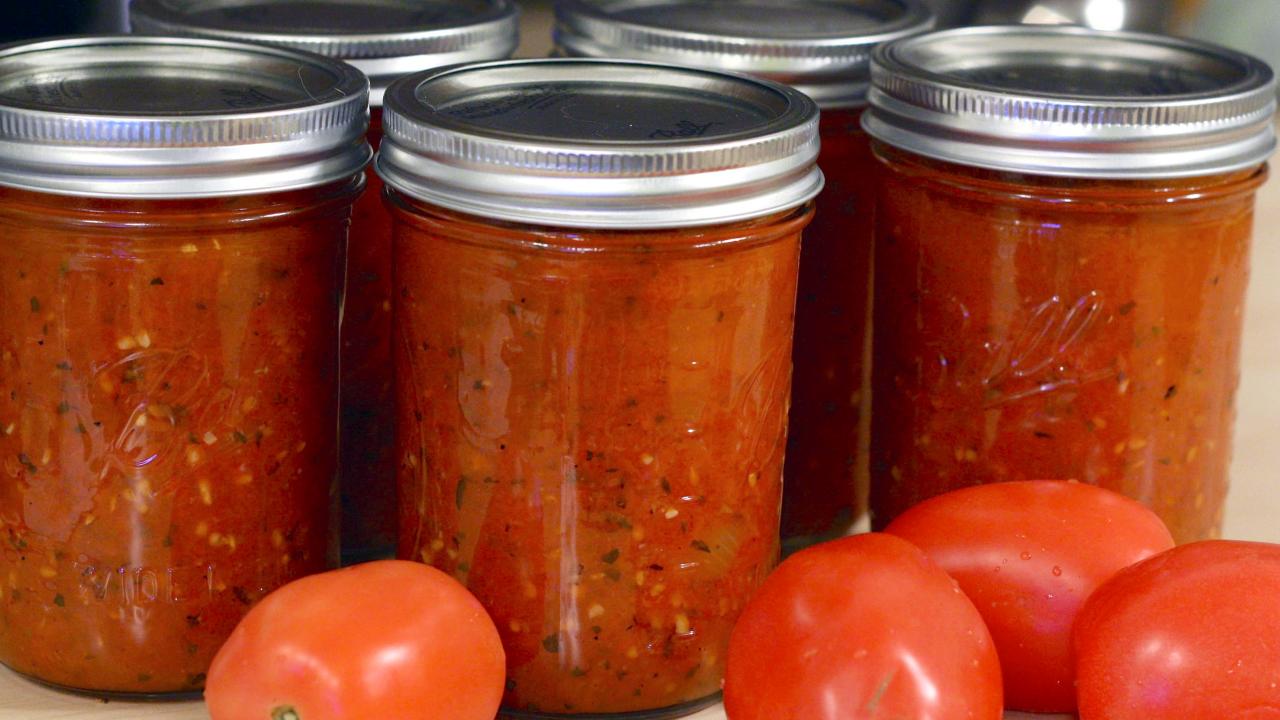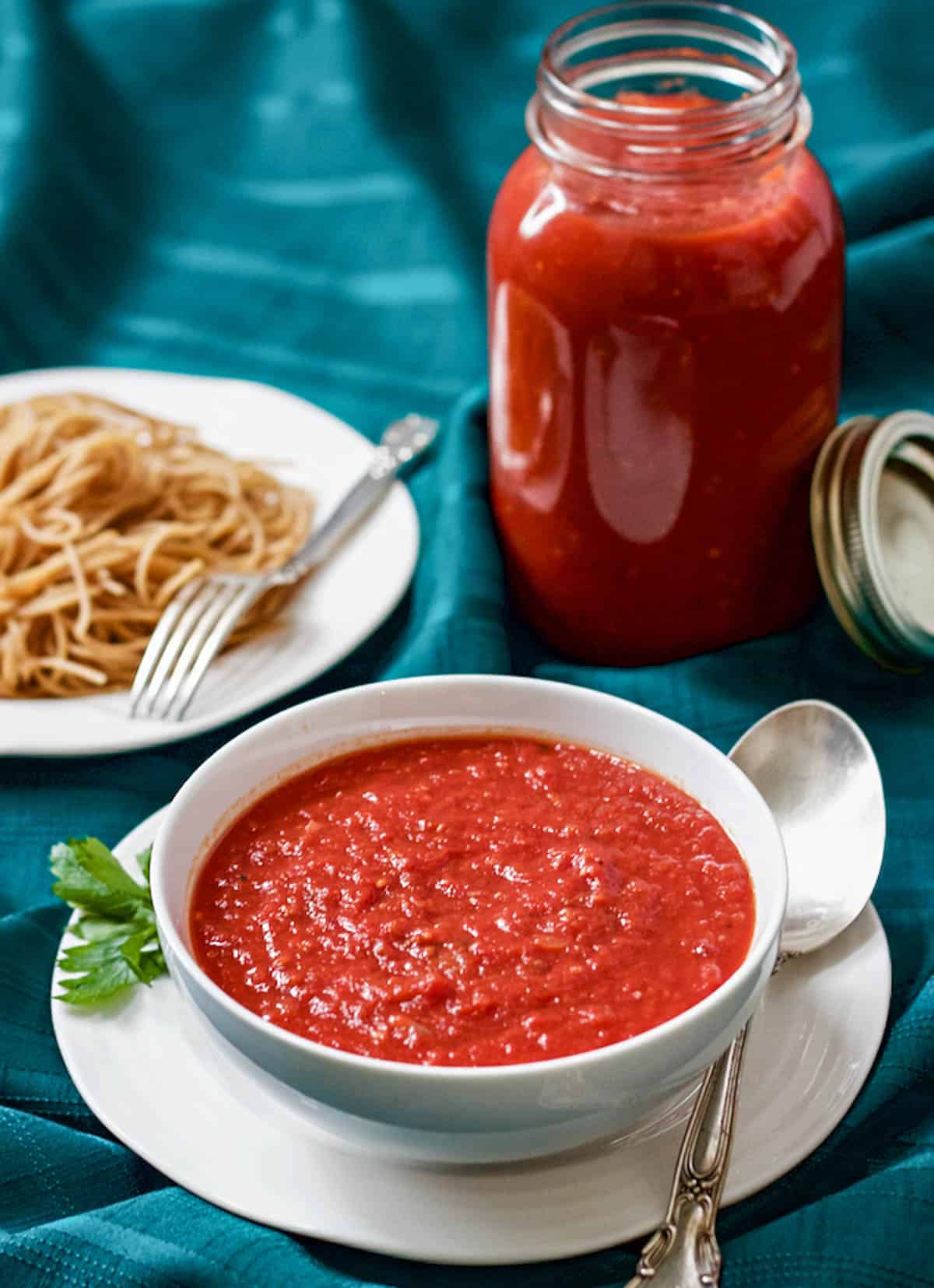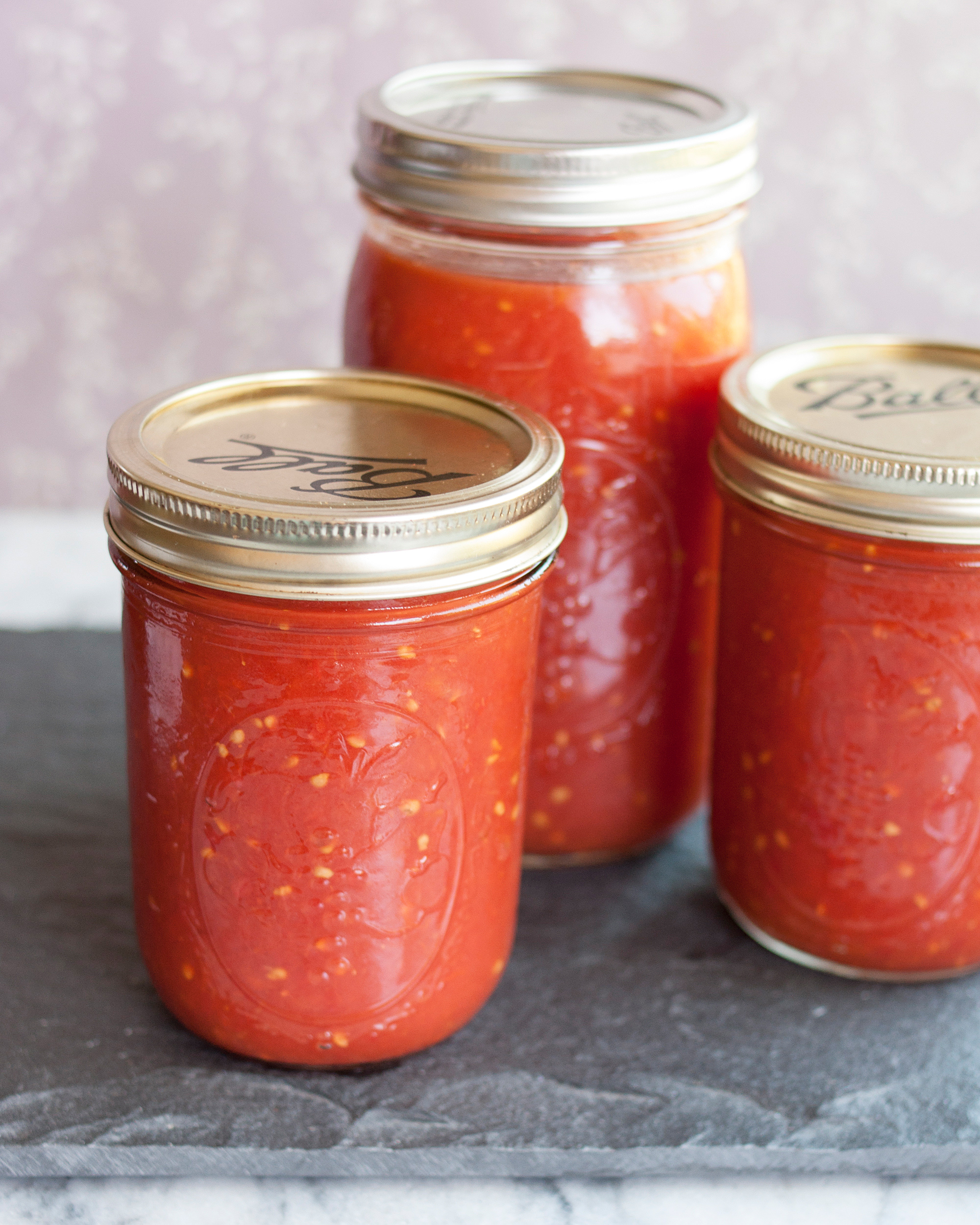Welcome to my ultimate guide on making the best canned spaghetti sauce recipe! If you’ve ever grown tomatoes in your garden, you know the sheer joy of harvesting these juicy, flavorful fruits. Turning them into a delectable, hearty spaghetti sauce that can be enjoyed year-round is both satisfying and practical. In this post, I’ll walk you through every step of creating, canning, and preserving this culinary treasure. Whether you’re a seasoned canner or a complete beginner, this guide is designed to ensure success.
Why Make Homemade Canned Spaghetti Sauce

Homemade canned spaghetti sauce has several advantages over store-bought options:
- Flavor: Using fresh, ripe tomatoes and adjusting the seasoning to your taste results in a sauce that’s far superior in flavor.
- Health: You control the ingredients, avoiding preservatives and unnecessary additives.
- Cost: If you grow your own tomatoes, it’s a cost-effective way to enjoy a premium product.
- Satisfaction: There’s something deeply rewarding about transforming garden produce into a delicious, shelf-stable food.
Ingredients

Tomatoes
The star ingredient! You’ll need about 18-19 pounds of fresh tomatoes, which is approximately 60 medium tomatoes. A mix of Roma (paste) tomatoes and other garden varieties like Early Girl works best for a balanced flavor and consistency.
Vegetables
- 1 cup finely chopped green bell pepper (about 1 large pepper)
- 1 cup finely chopped red bell pepper (about 1 large pepper)
- 2 cups finely chopped white or yellow onions (about 3 medium onions)
- 2 tablespoons finely minced garlic (about 6 cloves)
Seasonings
- 3 cans (6 ounces each) tomato paste
- ½ cup vegetable or canola oil
- ¼ to ½ cup granulated or brown sugar
- 3 tablespoons salt (canning salt is preferred)
- 1 ½ tablespoons dried oregano
- 1 ½ tablespoons dried basil
- 1 ½ teaspoons dried parsley
- 2 teaspoons Worcestershire sauce
- 1 bay leaf
- ½ cup bottled lemon juice
Equipment
- Steam bath canner (or water bath canner)
- Over-the-sink colander
- Food processor
- Large 8-quart pot
- Canning jars, lids, and rings
- Canning toolset (including jar lifter, funnel, and bubble remover)
- Immersion blender (optional)
Preparation Steps

1. Peeling the Tomatoes
Traditionally, tomatoes are peeled by blanching in boiling water and then shocking in ice water. However, a simpler method involves broiling:
- Cut the tomatoes in half and place them cut side down on a baking sheet.
- Broil for 3-4 minutes until the skins wrinkle.
- Cool and peel off the skins, which should come off easily.
2. Draining and Chopping
- Place the peeled tomatoes in a colander over a bowl or sink to drain for 30 minutes to an hour.
- Mash and squeeze the tomatoes with your hands or a spoon to speed up the draining process.
- Blend the tomatoes in a food processor until they reach your desired consistency.
3. Measuring Ingredients
Ensure accuracy by measuring the tomatoes after they have been drained and chopped. This recipe calls for 12 cups of peeled, drained, and chopped tomatoes.
Cooking the Sauce

- Combining Ingredients: Once you’ve prepared your tomatoes, peppers, onions, and garlic, it’s time to bring them together in a large pot. Add the tomato paste, oil, sugar, salt, dried herbs, Worcestershire sauce, and bay leaf to the pot as well. Stir everything together thoroughly to ensure that the tomato paste is fully dissolved and evenly distributed throughout the mixture.
- Simmering: With all the ingredients in the pot, turn on the heat to medium and bring the sauce to a gentle simmer. It’s essential to stir the sauce frequently during this step to prevent it from sticking to the bottom of the pot and burning. Let the sauce simmer for about an hour, allowing the flavors to meld together and the sauce to thicken to your desired consistency.
- Adjusting Consistency: As the sauce simmers, you may notice that it’s thickening up nicely. If you prefer a smoother texture, you can use an immersion blender to puree the sauce until it’s silky smooth. Alternatively, you can leave it chunky for a more rustic feel. The choice is yours!
- Preparing the Canner: While the sauce is simmering, it’s a good idea to get your canner ready. Fill it with water and start heating it up on another burner. By the time your sauce is ready to be canned, your canner will be hot and ready to go.
Canning Process

1. Sterilizing the Jars
- Wash the canning jars and place them on the steam canner.
- Cover with the lid and let the jars steam and sterilize while the sauce simmers.
2. Filling the Jars
- Add two tablespoons of bottled lemon juice to each sterilized, hot quart jar.
- Ladle the hot spaghetti sauce into the jars, leaving about ½-inch headspace.
- Wipe the jar rims with a damp cloth to ensure a clean seal.
- Place the lids and rings on the jars, securing them but not overtightening.
3. Processing the Jars
- Place the filled jars in the steam bath or water bath canner.
- Process for 40 minutes, adjusting for altitude if necessary (add 5 minutes for 1,001-3,000 feet, 10 minutes for 3,001-6,000 feet, and 15 minutes for 6,001-8,000 feet).
- Remove the jars carefully after processing and place them on a cooling rack or towel.
4. Sealing and Storing
- Let the jars cool naturally to room temperature.
- Check the seals: the lids should be firm and not pop up and down when pressed.
- Store the jars in a cool, dark place.
Tips for Success
Peeling Tomatoes
Broiling is a quick and efficient method for peeling tomatoes, making cleanup easier and avoiding the need for ice water baths.
Measuring Ingredients
Accurate measurement of tomatoes is crucial for ensuring the correct acidity and safe canning. Always measure after draining and chopping.
Simmering the Sauce
Consistent stirring and adjusting the heat to prevent burning is key to a rich, thick sauce. Using an immersion blender helps achieve the desired texture.
Safety First
Adhere strictly to canning safety guidelines. The acidity from bottled lemon juice is essential for safe water bath canning. Never substitute fresh lemon juice as it varies in acidity.
Frequently Asked Questions

Can I use other types of tomatoes?
Yes, while Roma tomatoes are preferred for their low moisture and high flesh content, other varieties can be used. Just ensure you follow the draining and measuring steps carefully.
Can I add meat to this recipe?
Adding meat would change the pH level and require pressure canning instead of water bath or steam canning to ensure safety.
How long does canned spaghetti sauce last?
Properly canned and sealed spaghetti sauce can last up to one year when stored in a cool, dark place.
Can I adjust the seasonings?
While you can adjust seasonings like herbs and sugar to taste, do not change the amounts of low-acid vegetables or lemon juice to maintain safe acidity levels.
Troubleshooting

Sauce is too watery
Continue simmering until the desired thickness is achieved. Remember, the sauce will thicken slightly after canning as well.
Jars didn’t seal
If the jars didn’t seal, refrigerate them immediately and use within a week. Alternatively, you can reprocess the jars with new lids.
Sauce tastes too acidic
Balancing acidity with a bit more sugar or letting the flavors meld for a few weeks in the jar often helps. Remember, the lemon juice is crucial for canning safety and cannot be reduced.
Conclusion
Making and canning your own spaghetti sauce is a delightful and rewarding process. With fresh garden tomatoes and the right techniques, you can create a sauce that outshines anything you’ll find on store shelves. By following this step-by-step guide, you’ll master the art of canning and enjoy delicious, homemade spaghetti sauce throughout the year. So, roll up your sleeves, gather those tomatoes, and let’s get canning!
Happy cooking and happy canning!





